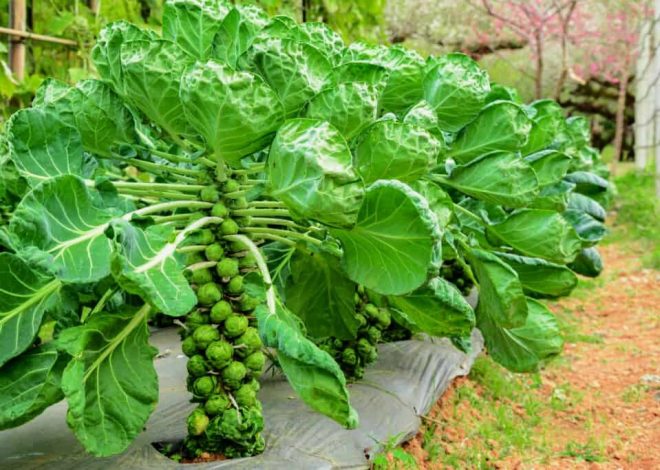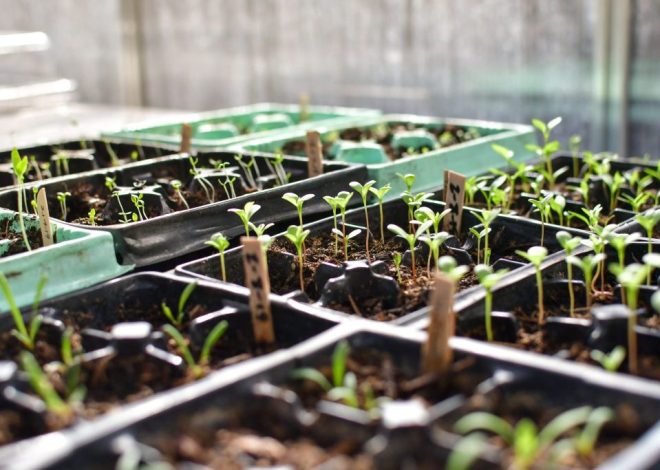
Everything you need to know about garden border fence
The first thing a friend sees when they visit you is the garden fence. This should be one of the first expenses to be incurred when buying a new home. What could be the average price per linear meter for a quality fence? There is hardly a simple and immediate answer to this question. What better solution to choose for your garden? There are many variables that influence the decision: the material, the dimensions, the ease of installation, etc.
Let’s try to see together what are the essential elements to take into consideration to obtain a good result, without compromising the wallet too much. What is the main reason why you want to install a fence? To keep unwanted wild animals away in a country garden? To improve privacy in a city garden? To hide architectural elements that are not very pleasing to the eye but placed in the adjacent properties?
Here are some solutions for the garden or terrace, available on the market
Fences with metal mesh
If you look carefully at the new gardens in the countryside but also elsewhere, you will see that more and more often the fences are built with metal nets of different shapes and sizes. The most unique is the one made with the electro-welded mesh, generally used to make the reinforcements made with concrete. These fences are increasingly appreciated by architects and landscape architects, for their sturdiness, long life, low maintenance required, and, last but not least, the low cost of construction. They are a good solution for those who want to maintain the view of the surrounding landscape, preventing access to larger wild animals, such as wild boars, roe deer, deer, etc.
What are electro-welded mesh panels?
Used for animal fences or, in construction, to build concrete reinforcements, the electro-welded mesh panels are made with iron or steel bars, welded at each intersection and, sometimes, galvanized. They come in different sizes both for the diameter of the bars and for the distance between them. In order to extend its duration over time, it is necessary to choose those with bars of larger diameters.
How do you build a wire mesh fence?
The panels with electro-welded bars are available on the market in variable dimensions. If necessary, the panels can also be cut to size to obtain the desired dimensions. To support the mesh panels, we use chestnut poles, or wood of similar duration, not peeled, with a diameter, also these, variable according to the results to be obtained. The poles can be planted in the ground simply by beating them or with a concrete base to fix them.
If in the vicinity of your home there are wild boars or porcupines, typical of the countryside but not only, you can reinforce the fence at the base, with additional protection at least thirty centimeters high. The reinforcement must be inserted into the ground carefully to prevent animals from undermining it until it is removed.
What plants could you use to hide part of the wire mesh fence?
One of the characteristic elements of these fences is that they can serve very well as a support for climbing plants and more. A vine plant will surely find very useful support to grow fast. Equally valid alternatives can be jasmine, Hardenbergia, clematis, wisteria. If you prefer climbing roses, you can attach them to the fence with wire. The hedera could create too dense a barrier and cover everything.
The costs for the construction of a wire mesh fence depend on the size of the bars used and the fence itself, on the simplicity or otherwise of assembly, as well as on the transport and the type of ground in which to dig the holes for the posts. Surely, this fence has a lower cost than an all-wood fence.
Fences with ready-made panels of natural materials
There are two different types of these fences, those built with ready-made panels, fixed to poles inserted into the ground, or those built to measure, on-site, designed for the specific situation, to adapt to each element present on the ground.
The simplest and cheapest are the ready-made ones, just to assemble. They provide a good aesthetic result and limited budgets are required for their construction. They are made with natural materials of different nature, such as bamboo, willow, reeds, wood. They are easy to install.
Also, in this case, part of the built fence or all of it can be covered by climbing plants.
Intertwined fences
Intertwined fences, in some regions, are a centuries-old tradition. Built and used for decades, by generations of skilled craftsmen, for the most diverse uses. From the Neolithic to today they have been handed down over the centuries, first to delimit the cultivated areas, then to contain livestock. In recent years, many architects and landscape architects have rediscovered its beauty, versatility of use, and low environmental impact, for use in gardens. They are built entirely with natural materials.
They can be made mainly in two ways: by building them on-site to measure, with the result of a single barrier, or with panels of predefined dimensions, to be fixed to the ground and to each other.
What are intertwined fences?
A woven fence consists of a continuous weave, consisting of vertical posts that are driven deep into the ground and horizontal strips, such as willow. The latter are intertwined through the uprights. The final appearance largely depends on the materials used for the construction and their quality.
What are the best materials for woven fences?
Willow or reeds are undoubtedly materials that better than the others lend themselves to being used in these artifacts. The finishes obtained have countless characteristic elements, which adapt to any environment, city or country, a terrace or a large park. They add value to the garden in which they are used, as well as a warmer color and rich in natural shades.
Even the core, if used in these panels, adds notes of color, which are difficult to obtain with other materials.
How is the woven fence installed?
Its assembly is within everyone’s reach if it is a question of panels of predetermined dimensions. Poles are used to be fixed in the ground, at predetermined distances, which are generally of the same material, but which can also be made of metal or chestnut. For a purely aesthetic aspect, it is better to avoid turned poles and impregnated in an autoclave. They would reduce the value of the fence to be built, making it cold and impersonal.
For custom-made fences, it is better to use a professional who, with simple precautions, will be able to overcome any obstacle that will arise on the path of the fence. Curves, waves, unevennesses will only serve to give more character, unique shapes, difficult to obtain with other traditional fences.
The texture is also an element that adds a distinctive character to this handcrafted artifact. It can be used to delimit a vegetable garden, a garden for cut flowers, to delimit a terrace, or to create a secret corner in the garden .
If you use good quality materials, their durability will not disappoint you. A fence of this type is an excellent element to cover unsightly parts of the garden, such as bins, tool sheds, service areas, gas tanks. If necessary, they are easily removable.
Dry stone walls
As for the previous ones, even the dry stone walls have been used by men for centuries. If well built, they can last for many, many years, but they have one flaw: they are not really within everyone’s reach! Learning how to build one to perfection, it takes a lot of time and patience. But with a little ingenuity and a lot of passion, you too could try your hand at this new adventure for your garden.
What is drywall?
You will hardly find these artifacts in areas where the stones needed to build them are not available in nature. As the name suggests, they are built entirely of stone , without other elements of aggregation, such as earth or concrete. The structure supports itself only by the careful and wise positioning of the stones, one on top of the other.
Some dry stone walls in Europe date back over 7,000 years. They were used to lock up pets. If you take a walk in the mountains or in the countryside, you will certainly find obvious traces of it.
How is drywall built?
Since neither lime nor cement is used for their construction, dry stone walls are elastic and flexible, they adapt very well to the soil that hosts them. The structure must be composed with skill and without empty spaces. A void represents a weakness in the artifact.
Construction styles vary from region to region, in the color and texture of the materials, as well as in the construction technique. There is no foundation on which to lay drywall. After removing the grass and leveling the surface, we start with the laying of the larger stones. As you go up to the top, the structure becomes thinner. Harmony is the basis of the whole structure.
With predefined distances, stones are placed which serve as a binder between two portions of the wall and which help to keep it united.
On top of the wall, a layer is laid to protect the construction, which helps to keep everything together.
Its duration depends on the hardness of the stone used and the skill of its builder.
Cages with stones
The walls built with metal cages filled with stone pebbles are a decorative element for the surrounding landscape. These too have been used for many centuries, in the most diverse shapes and sizes. In Japan, they still make them today with cages made from bamboo parts. They offer valid support for the garden, with the advantage of being very effective and also economical to make.
What are stone cages?
They are large cages constructed of metal, which can be filled with any type of inorganic material: rock debris, bricks, river pebbles. Originally, their structure was made of woven wicker. Now, they are made with galvanized steel wire. Their uses are the most diverse, from supporting embankments to preventing soil erosion, etc.
The first testimonies in history even lead them to ancient Egypt, on the banks of the Nile. Later, they found use as military fortifications to defend cities. Centuries later, they began to have a supportive value for architectural works such as walls and castles. Finally, in naturalistic engineering works, they are used to defend the coasts from erosion, along motorways as noise barriers, or to reinforce the banks of rivers.
Why use them in the garden?
Because they have a natural appearance, which, if well built, fits into the surrounding environment without disturbing.
They are built with natural elements, often coming from the same place of use. Transportation costs are minimized.
They are an element of environmental mitigation: they provide passive cooling. The air passes through them naturally, so it cools and decreases the temperature surrounding the structure.
They are permeable and drainage for rainwater and runoff. They do not deform and keep their position in place.
They are easy to install, do not require foundations. Over time, sand or vegetation strengthens its effectiveness and stability. They conform very well to variations in the shape of the terrain.
They have a long life.
What material can be used to fill them?
River stones or quarry sections are the preferred materials to compose these walls. Some rocks are chosen for their easy availability or for the decorative elements they have. A rock with a higher density will help better support the structure.
Before building a stone cage, ask a professional in the field to determine the dimensions and the related loads required. At this point, you just have to choose which one best suits your garden or terrace.




